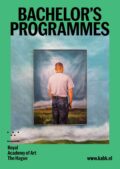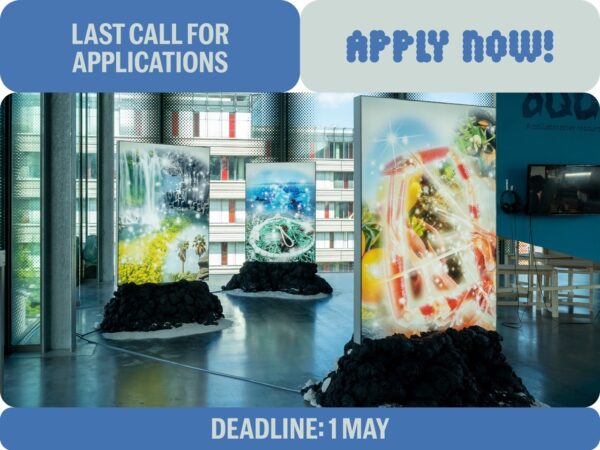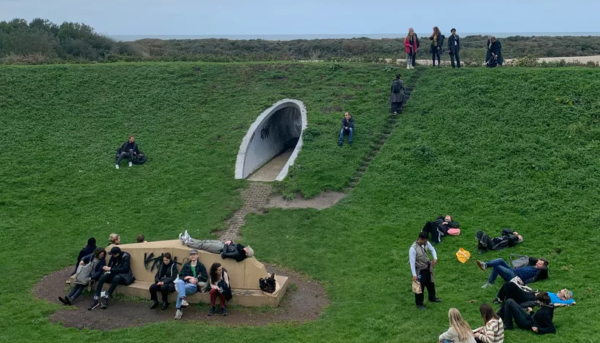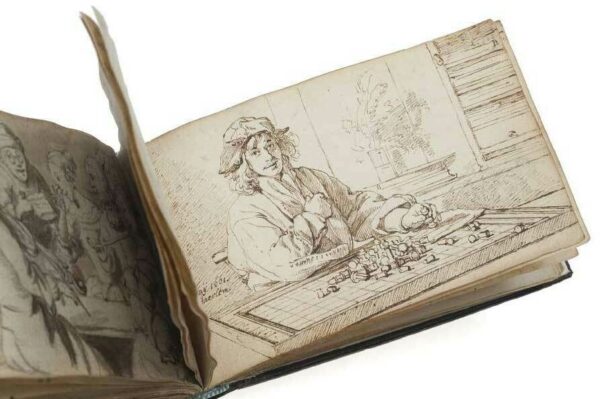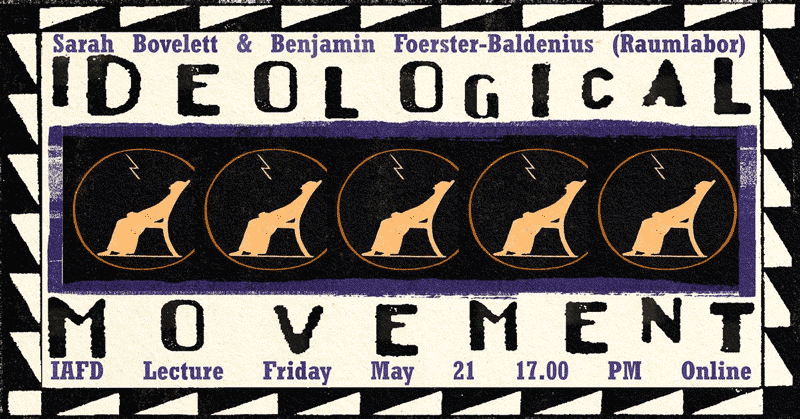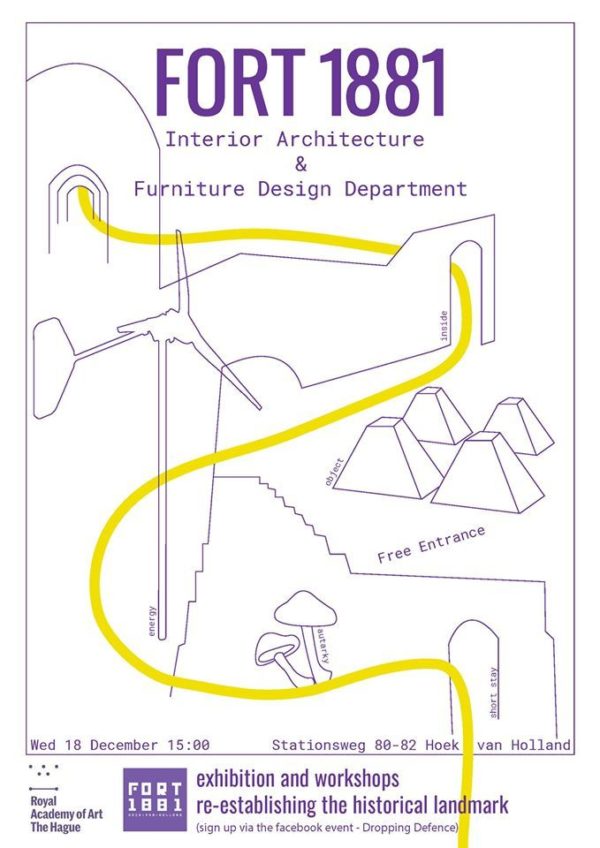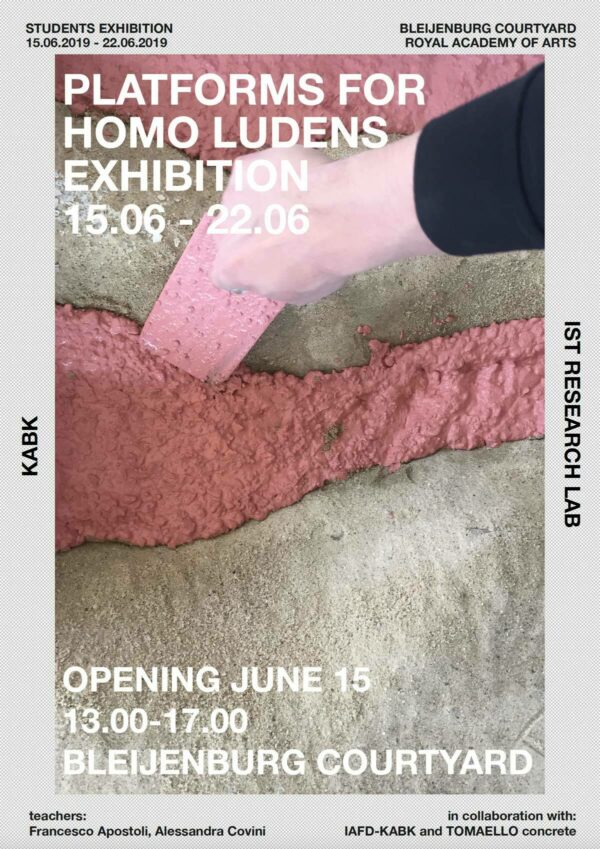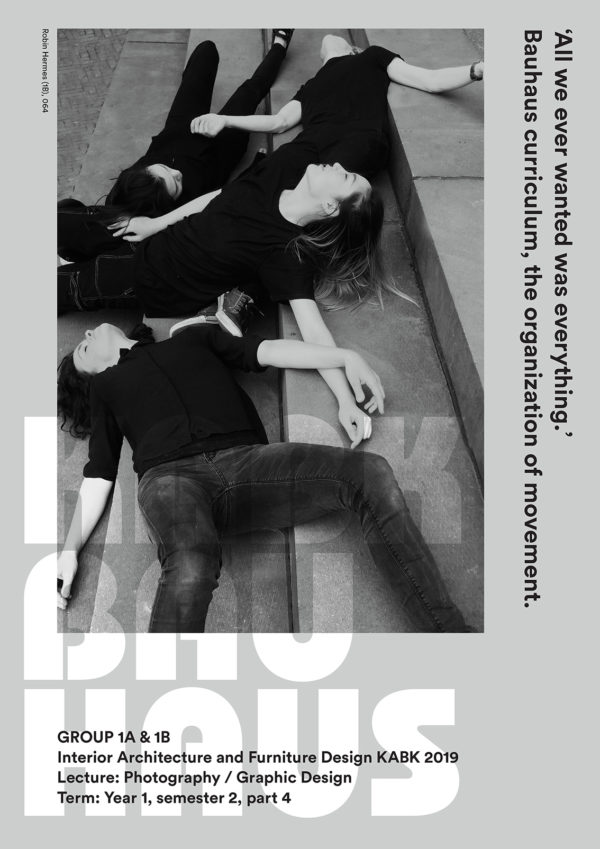Programme description
The bachelor's programme in Interior Architecture and Furniture Design (IAFD) covers the full bandwidth of the spatial domain and focuses on the spatial conditions that determine how we experience our everyday living environment.
Each year, a central theme is chosen that inspires the programme's activities. Some examples of themes are: Shrinkage-pruning-growth, (Dis)connect/Always on, Gender, The Politics and Poetics of Landscape, Gardening the World, Movement, Bio-plasticene, No Trace(s) Left and Celebration.
From this year onwards we will concentrate on Cohabitation. What is the relationship between human beings, and other species and materials on their habitat, earth? What types of communication, dependencies and co-operations are possible amongst each other and, last but not least, how can this be addressed and reflected in spatial practice?
The four-year programme of the Bachelor Interior Architecture & Furniture Design consists of three phases: the propaedeutic phase, the main phase and the graduation phase. Each phase has a specific mission. The line followed by these missions is that of EXPLORE (Year 1), FOCUS & CONNECT (Years 2 and 3) and POSITION (Year 4).
This chronological structure is translated into five continuous learning tracks, which constitute the domains that are addressed in each of the years of study. These five domains are:
Theoretical and practical learning skills are integrated in the design studios in which you have your own workstation. Because the architecture and design courses that we give are embedded within an art academy context, the emphasis of the courses lies on the possible cultural and social role of design and architecture.
By using your ‘thinking’ hands, you experiment while working with materials and giving form. By making content you make surprising and unforeseen discoveries within your design process.
By offering to work on real assignments (for external clients) within the framework of the school, you train your professional practice skills. An integral part of the IAFD programme is designing events like the Open Day Presentation, the Graduation Festival and the Department Dinner and taking part in them.
We analyse existing architecture, design and art projects to discover the decision-making process and how we could use this knowledge in planning new ones. You are introduced in research methods that are used in the various disciplines of art, architecture and design. Through short lectures and preparation of papers, philosophical, cultural, social and political relations between design and society are explored.
Within this domain, you sharpen your critical and independent attitude and discover your unique way to position yourself within the art, architecture, and design context. In this, the emphasis is on learning to work independently and to make choices for your positioning in the field. You are also given more choice in the supervision by teachers of their independently set up projects. ‘Mind Map’ in the first year starts with a Context, the Resources project in the second year ‘Project X’ in the third year, and in the final exam year the Graduation Project & Thesis.
The curriculum is based on the principles of experimentation and research. Each academic year, the research focuses on specific areas or current topics, starting from a solid historical and cultural basis. In this way, new possibilities arise to reinterpret this basis and to integrate current issues into design experiments. Because these design experiments are often very personal, there is no standard process or method that can be followed. By showing different methods, the teachers can guide you in finding and developing your own way of working. This also means that knowledge of the natural sciences, such as mechanics, biophysics, material and elementary qualities, is only taught on the basis of individual needs and necessity, depending on your own research.
Each of the five domains has an equal share in determining the quality of the total curriculum. You work in your workspace in the IAFD studio and in the workshops. The projects that are developed benefit from the integration between the domains and by, for example, guest lectures built into the curriculum. Examples of these are: hand drawing classes, digital drawing classes, analogue and digital 3D model building, knowledge through the so-called Docking Stations (DOK), presentation workshops and more. Also peer to peer learning and reflecting are an integral part of the curriculum. To facilitate this we stimulate students to work at the academy.
What is paramount for your development as a critical as well as emphatic designer, is to be confronted with the world of designed products/results. The IAFD department organises excursions, field trips, visits to building sites, studios, workshops, production plants, and exhibitions, but also encourages you to make your own walks through the interior of the city, the country, biking or traveling with the sole purpose of looking around you and experiencing how everything in the world is designed.
Programme structure
Timeline/Assessments & Progress Evaluation
Most courses/modules have a duration of one block or one semester. Per week some courses are taught for a few hours, some half a day, some a full day. In the last week of the course each module is assessed independently during the individual reviews by the responsible tutors, accompanied by a written feedback.
Then, at the end of the semester, you will fill in your self-assessment, formulate a semester statement and present and document all your work at the Collective Assessment. The presentation is visited by the team of tutors that taught you during the past semester. Starting with a Q&A, there is a conversation about the works, their connection and your study progress, and you will receive feedback (also in written form).
Halfway through the semester, at the end of the first block, a progress evaluation is inserted to have an informal dialogue on the development of your work, giving peer to peer feedback, moderated by two of your tutors. In this week there are no regular classes apart from the academy-wide modules and IST projects.
Competencies & assessment components
The IAFD department follows the competencies that have been drawn up for art education in the Netherlands. These competencies are sharpened in each academic year.
- Creative ability
- Capacity for critical reflection
- Capacity for growth and innovation
- Organisational ability
- Communicative ability
- External awareness
- Capacity for collaboration
Other evaluation criteria relate to project education:
- Research/Analysis
- Idea/Concept/Vision
- Presentation - oral, visual
- Design qualities
Study progress, programme evaluation and well-being
The IAFD department has installed a quality evaluation cycle, the programme evaluation, where you are actively invited to participate. The complete programme of each study year is regularly evaluated, including talks on scheduling, tutorials, workload and teaching methods. The programme itself has some courses geared towards a better understanding of the learning environment, including tips for physical well-being, how to benefit from peer-to peer learning, how to give and receive feedback and how to structure and organise your study.
We offer one on one conversations on your study progress. Difficulties and challenges, but also choices and opportunities as well as personal professional insights are being discussed. These conversations stay private, and if there are any personal concerns and difficulties that you encounter which are more serious and beyond the reach of the help that the department can provide, we have in-house student counsellors at KABK that can offer help and support.
Electives, self-initiated projects and Individual Study Track (IST)
Some parts of the IAFD study programme are electives to give you more agency in your personal study track. We also offer the opportunity for self-initiated projects.
One day a week, the Individual Study Track (IST) is offered. The IST is an academy wide programme, giving it an inter-disciplinary character.
You can use the IST to add depth to your studies. You can f.i. choose to lay greater emphasis on the fundamental courses, make a selection from the KABK-wide range of interdisciplinary Research Labs and introductory courses, or choose to take electives or a minor at Leiden University. The IST is accompanied by a study plan, which is set up with the IAFD IST coach.
IAFD Tuesday Talks
In the first semester a lecture, discussion and meet & greet programme is organised to be attended by all IAFD students. Alumni talks are alternated by talks from professionals and experts. The lecturers are invited to stay after the talk for an informal get together with the IAFD students.
Project weeks
The weeks following the collective assessments in the first semester and the beginning of the second semester (3 weeks in January) are used for project weeks. During a project week, one project is worked on which leads to a result at the end of the week. The project can be an experiment or initiative proposed by the students, or offering a specific skill that is missing from the curriculum or be a way to work on one project in full concentration. During a project week, the working mode is the same as in a workshop. The project weeks are intended to give you the opportunity to develop project management and self-reliance within the IAFD programme. The project weeks are guided by tutors, guest lecturers or external experts; depending on the assignment and the location.
Community day, department dinner & buddy programme
- Community day
The IAFD Community day, a.k.a. the C-Day festival, is an initiative from our department to build community together and invest in our shared study environment. It is an active platform for topics that are essential parts of studying, but not directly implemented in the curriculum. Topics that will be addressed through workshops, lectures and q&a’s are: the meaning of being a community, diversity & inclusion, sharing cultural backgrounds, and the professional life after the academy. The IAFD Community day is intended for everyone who is actively involved in our department. Our aim is to strengthen our connections, and therefore both students and tutors from all years will participate in mixed groups. A workgroup of students and tutors will be developing the content for this department event. In this workgroup we discuss topics we would like to address during the community days and explore ways how to do that. Together we will make a programme and organise the event. - Department dinner
Each year IAFD2 students are being asked to design, organise and host a department dinner where all students and tutors from the department are invited to share a meal. - Buddy programme
We have different buddy programmes installed to enhance social cohesion, easy access to information and share experiences on the study programme. The buddy programme for the first-year students, where they partner up with a second-year student, is geared towards making the first-year students familiar with the study programme and the learning environment at the KABK. The buddy programme for first- and second-year students has been installed to partner up with a graduate student building up their graduation project presentation to give insight into what it entails to graduate from the department.
Mission: EXPLORE
During the first study year, the following core concepts play a central role: foundations of the discipline, fundaments, scanning, experimentation, (broad) orientation and confrontation, design, learning by doing, interaction and social networking/student mix. The propaedeutic phase is one of asking questions, exploring, experimenting and observing, in addition to becoming aware that art and design (along with art education) always involve creation in relation to thought (and vice versa).
Project-based instruction plays a central role. Each block, you work on one or two main projects, which involve design exercises composed in different phases. Project work takes place during a concentrated period of approximately 8 weeks. The other domains are integrated in the Studio domain. Maximum use is made of the institute’s workshops and facilities, exposing you to all possible methods of development and production. Interaction with the other disciplines offered by the KABK is also encouraged during this phase.
The Studio is characterised by learning to work with space and form, form studies and material research. Investigations are fuelled with input from other disciplines, working across disciplines. You are familiarised with the idiom of the architecture and design discipline by producing and experimenting and by making your hands speak. Subjects that are addressed are Mining, Manufacture, Assemble & Disassemble, Connect, Context, Present & Reflect.
Ingredients of the Studio
- You receive a thorough introduction to all departments and disciplines and to the wealth of facilities/workshops available throughout the Academy (the Media & Materials domain).
- You design, organise and produce an event (the IAFD Open Day), you present your assignments for assessment each semester, and are a buddy to a graduate student helping with their graduation project (the Professional Practice domain).
- Architectural and Design History & Theory classes will give insight on the history and contemporary situations and context of architecture, design and visual arts. - the Alchemy track will train your oral and writing skills for communicating the concepts and frameworks in your own work and presentation exercises (the Context domain).
- Finding out your personal professional interests and setting up your own research. It helps you to document investigations for the purpose of helping you to formulate your design attitude (the Independent Practice domain).
KABK wide lectures
During the first year you will also attend the following academy-wide lectures:
- Discourse lectures series with discussions on a number of case studies in art and design.
- (First) 100 days - Getting familiar with the kabk learning and working environment and the living environment in the Netherlands and The Hague. You can then also meet fellow students from other bachelor’s departments and learn from them.
- The KABK also organises a Studium Generale lecture series for all students to attend. In addition, IAFD lectures are regularly organised within the various subjects, the theme of the year, for all study years.
Courses & ECTS credits 2023-2024
| Courses Semester 1 | ECTS |
|---|---|
| Manufacture - Workshops | 6 |
| Mine - What is material resource | 6 |
| Assemble and Disassemble | 12 |
| Events 1 | 1 |
| Lectures | 1 |
| 100 Days Program | 1 |
| Research 1 | 1.5 |
| Discourse 1 | 1.5 |
| Collective 1 | 0 |
| Total study points per semester | 30 |
| Courses Semester 2 | ECTS |
|---|---|
| Collect and Connect | 12 |
| Present and Reflect | 12 |
| Material Bank | 1 |
| Events 2: Graduation Project Buddy | 1 |
| Research 2 | 1.5 |
| Discourse 2 | 1.5 |
| AWPPW | 1 |
| Collective 2 | 0 |
| Total study points per semester | 30 |
Mission: FOCUS
Core concepts in the main phase are forecasting, back casting, visionary thinking, dreaming, the future, and the here and now in detail. The curriculum seeks to forge links to contemporary issues in both the national and international arena - to train your individual position in choosing a focus point within these themes (Who am I as a designer? What would I like to work on?).
Having been introduced to your chosen field, the academy and the workshops during the propaedeutic phase, you use this basic knowledge in the second year to adopt positions in assignments of greater complexity. The reality of the professional field and the specific areas of attention it comprises are examined in greater depth. At the same time, you are urged to start formulating a vision and a dream for your future as a designer. You are expected to demonstrate a greater degree of initiative, and you are challenged to develop and use your own personal preferences, becoming aware of your own intentions.
Interior and Furniture
From the second year onwards, students of (Furniture) Design and (Interior) Architecture can follow separate curricula. Although the projects offered in the elective Studio domain are structured in the same way, the approach and content is tailored to the specific field. At the same time, this similar structure also offers opportunities for collaboration. The studios of the Furniture Design department will focus more on deconstructing and reconstructing objects, discovering new resources and production methods. The Interior Architecture department focuses more on, for instance, the development of spatial organisational skills, tectonic exercises on skins and envelopes and social implications of building. The second year students follow the other domains jointly. The in-depth investigative component within the Studio domain increases with each study year. The Media & Materials domain will be mostly integrated in the Studios.
The Context domain in the second year consists of three main components: Art, Architecture and Design History & Theory. Through a series of diverse lectures, you are introduced to a variety of relevant themes in art, architecture and design history and theory and how these topics have been used, researched and exploited by artists, architects and designers. By means of case study assignments in Alchemy, you are challenged to further scrutinize the concept of these themes, broadening your frame of reference, and to employ the concepts of these topics into your own work.
In the second (and third) year, the Context domain is also linked to one of the two Studios (per semester), referred to as DOK (docking station). These DOKs provide you with direct theoretical input and motivate you to delve even deeper into the theory of the assignment. This constitutes an initial impulse for the development of individual preferences and original research.
Courses & ECTS credits 2023-2024
| Courses Semester 1 | ECTS |
|---|---|
| Elective: Make in Detail IA 1 | 6 |
| Elective Make in Detail FD 1 | [6] |
| Elective: Design & Analysis | 6 |
| Elective: Reverse Engineering | [6] |
| Individual Study Trajectory (IST) | 6 |
| Context 3 | 2 |
| Alchemy 3 | 2 |
| Events 3: Community Days + Project Weeks | 4 |
| Total study points per semester | 30 |
| Courses Semester 2 | ECTS |
|---|---|
| Improvised Building | 6 |
Context 4 | 2 |
| Alchemy 4 | 2 |
| Resources | 6 |
| Individual Study Trajectory (IST) 2 | 6 |
| Reality Check 1 | 2 |
| Design Routine | 2 |
| Events 4 | 4 |
| Collective 4 | 0 |
| Total study points per semester | 30 |
Mission: CONNECT
Core concepts in this part of the main phase include the following: reality check, skills, knowledge, practical and professional experience, employee vs. entrepreneur, internship and projects from internal studio/lab/workshop or external collaborations with the professional field, industry, authorities, companies and social organisations.
During this phase, you will focus on developing your own work and individual approach, which is expressed in personal questions or challenging statements. The interaction between the artistic and the social environment also plays an important role in this phase.
The third study year mirrors the structure of the second year, with an additional focus on the links to professional practice. The exercises within the Studio domain attempt to add depth by specifically addressing the malleability of the designs. You become aware of the challenges that result from a developed concept in terms of construction, materials and costs by carrying out a ‘reality check’.
The practical exercises constitute an important aspect of the third year curriculum. You will work on real assignments for external clients, in which implementation and realisation of the project within budgetary frameworks and a strict schedule play an important role.
Some representative projects with a direct link to professional practice include:
- Design of OCW Emancipation awards,
- Innovative bus stop designs for Arriva’s ‘green’ line 90,
- PRADA x KABK,
- Mentality - No Style!, a series of five events on the occasion of the 2017 centennial of De Stijl,
- IAFD x Forbo Flooring and
- Scenography for The Nutcracker Suite in collaboration with the Jazz section of the Royal Conservatoire.
You are encouraged to work across disciplines as much as possible and to draw heavily upon the expertise, facilities and workshops available within the KABK. The Media and Materials domain and Context domain are further explored by focusing on specific themes and techniques. These overarching topics emerge from the year theme, which often relates to a specific social context, and also provide direction in the other domains. One of the courses is related to writing about, editing and art direction of your work.
In semester 5, you write an internship plan including the development of an individual and expressive portfolio in order to obtain a place in the company or environment that suits you or interests you the most. The capstone of the main phase is this assessment portfolio prepared during the second and third study years.
At the end of semester 5 and the start of semester 6 an assignment for a self-initiated project and a writing exercise are introduced to make you comfortable with the requirements for a graduation project in semester 7 & 8.
In semester 6 you will be familiarised with professional practice in the form of an internship at a carefully and individually selected national or international design or architectural firm, an artist studio, governmental or non-profit organisation, or an artisan studio. Halfway through the internship period, at the internship return day, you will give a presentation about your experiences to your fellow students, the internship coordinator and the second year students. The internship concludes with a written report.
Courses & ECTS credits 2023-2024
| Courses Semester 1 | ECTS |
|---|---|
| Elective: Design & Society IA | 6 |
| Elective: Design & Society FD | [6] |
| Field Research | 6 |
| Elective: Tectonics [DOK] 1 | 1 |
| Elective: Collection [DOK] 1 | [1] |
| Individual Study Trajectory (IST) | 6 |
| Alchemy 5 | 3 |
| Event 5: Presentation | 1 |
| Reality Check | 4 |
| Internship 1 | 2 |
| Collective 5 | 0 |
| Total study points per semester | 30 |
| Courses Semester 2 | ECTS |
|---|---|
| Elective: Design & Society IA | 3 |
| Elective: Design & Society FD | [3] |
| Elective: Tectonics [DOK] 2 | 3 |
| Elective: Collection [DOK] 2 | [3] |
| Project X | 4 |
| Alchemy 6 | 3 |
| Individual Study Trajectory (IST) | 3 |
| Internship 2 | 15 |
| Total study points per semester | 30 |
Mission: POSITION – A YEAR OF RESEARCH
Core concepts in the fourth year include: conceptual framework, manifestation, body of work, statement and portfolio, additional research, additional depth, paper/thesis, and building a collection.
In the graduation phase, you will focus on developing your individual position by formulating a conceptual framework. You will determine your place in the professional field, manifesting this through your body of work, statement and portfolio. Additional depth is pursued through a paper or thesis. You will create your own architecture or design projects, master the associated techniques and are able to present your projects in a convincing manner.
The primary goal of the final phase, which culminates in a final examination, is to allow you to demonstrate your qualities as designer. This implies that you must be able to convert your ideas into concepts, architectural solutions, furniture and product solutions, form, material, technique and detail. All of this in the context of two assignments: a self-initiated graduation project and a thesis or paper.
In semester 7 you work on input for your graduation project, either by acquiring specific skills or an applied assignment that testifies as a sort of ‘master proof’ to the skills you have obtained in designing and realising projects. Or you finalise your thesis or paper, as a preliminary research outcome which forms the outline for the graduation project.
Within the Context domain, the thesis is the outcome of an individual and self-initiated research – using language (among others) as a tool to order intuitive and associative reflections. The thesis functions as a well-founded manifesto – a mission statement – that can link with the graduation project. Positioning & Presentation, within the Professional Practice domain, is a permanent workshop that addresses all essential, structural support regarding (re)presentation and additional connections to practice, all other domains and other disciplines. Workshops and lectures will offer useful exercises, hands-on research and practical support. The preparation of the semester 8 Field Trip will also take the form of a workshop, resulting in a travelogue.
The semester 8 examinations in Interior Architecture or Furniture Design consist of the following:
- Graduation Project
You are able to create multiple designs that address one or more issues of the entirety of the (interior) architectural or (furniture) design field in the broadest sense of the term. This is accomplished within a thematic and self-developed graduation assignment that relates your design, project, work to a thematic or locational context. You select your independent position within an applied assignment, demonstrating that you are capable of applying the relevant techniques and skills needed to realise your design optimally, based on the knowledge and experience gained in all domains. - Research by design (IST)
Research by Design expresses your personal design attitude. This design and research component is an extension of previous study projects that have been realized within the domains of ‘Studio, P & I Practices, M&M, Context’ and/or the Individual Study Track. It’s about having an insight at your way of working and being able to use this insight to define and formulate your graduation project design brief. - Theoretical research
One important aspect of the final phase is the theoretic research project: an essay (in a visual or written form) and/or thesis in which you are expected to position yourself and to reflect critically on the discipline, your fascinations and the relationship to your own work. The essay/thesis explicitly addresses the knowledge acquired within the Context domain. You are expected to adopt specific positions with regard to current theories on architecture and design and position yourself within the current discourse. - Body of work
You can include previously realised designs and research (from preceding study years) in your final Graduation presentation and exhibition. - Professional practice and the professional context
The final examination, the graduation exhibition and the presentation of the graduation projects will be part of a public event: the Graduation Show. Here, the most important aspect is the visual and verbal presentation of your graduation projects. You are expected to position yourself and your work within the discourse. There are a variety of ways in which you can present your work to the outside world, for example through your graduation portfolio or by creating your own professional website and setting up PR and social media campaigns.
Courses & ECTS credits 2023-2024
| Courses Semester 1 | ECTS |
|---|---|
| Connections | 3 |
| Input! | 6 |
| Material Process 1 (incl IST 5) | 7 |
| Communication Design 1 | 3 |
| Text as Material 1 | 8 |
| Internship 3 | 2 |
| Event 7: After-party lectures | 1 |
| Collective 7 | 0 |
| Total study points per semester | 30 |
| Courses Semester 2 | ECTS |
|---|---|
| Connections in Practice 2 | 3 |
| Material Process 2 (incl IST 6) | 14 |
| Communication Design 2 | 3 |
| Text as Material | 8 |
| Event 8: Graduation Exhibition | 2 |
| Total study points per semester | 30 |
OER 2023-2024
Education and Examination Regulations
You can find information about the regulations and provisions dealing with the organisation of the programme and the assessments and examinations related to it in the Education and Examination Regulations (in Dutch: Onderwijs- en examenregeling; OER)
Social role of design
IAFD Cohabitation
A place for education in rethinking Interior Architecture & Furniture Design
The IAFD Cohabitation programme of the Bachelor Interior Architecture and Furniture Design at the KABK covers the full bandwidth of the spatial domain. The programme is geared towards the essential and necessary shifts in defining spatial conditions to shape our daily living environment being part of the eco-system of planet earth.
In a society where the pace is fast and rapid technological changes have become commodities we have to look carefully at how to position new generations of designers and architects. We have to ask ourselves what disciplines entail nowadays, how they function within the greater complexity of our society, and how they produce knowledge and environments that affect the wellbeing of us human species, but also other species and the planet at large.
The elusive way society is organised nowadays directly affects our daily routines and shapes our physical environment. It also provides opportunities to change behaviour and the organisation of everyday life by proposing speculative, innovative and imaginary spatial design practices. At the same time, we see how most of the design practices for (interior) architecture and (furniture) design are embedded in larger economic cycles that require a lot of stamina and perseverance to transform or alter specific flows, narratives or developments.
Success and failure are validated through media and market value, and these are by default conservative. We need to make sure that you are educated are aware of this paradoxical and unstable situation. You have to become aware of what this means for the profession, and for professional practice in the near future.
Agility and adaptability are essential as well as resilience and agency to be able to propose an alternative agenda. And from there, we can identify the new tasks, and new challenges. By seeing architecture and design not as a technical protocol, but primarily as a social practice in dialogue with our natural environment, IAFD Cohabitation has an interdisciplinary thematic focus on topics such as ecology and sustainability, on the question of living together on a damaged planet.
What is the relationship between human beings and other species and materials on their larger habitat, earth? What types of communication, dependencies and co-operations are possible amongst each other and how can this be addressed and reflected in spatial practice?
The department has chosen to look closer into the cultural aspects of the disciplines, design & architecture, next to the economic or functional. You could say that concepts like critical reflection, narration, speculation, and imagination are more commonly used than problem solving and physical wellbeing, which doesn’t mean that projects and your work not material-based or not practical.
By coining the scientific and knowledge-based part with a situated, poetical, imaginative, and narrative part, we give you the chance to overcome or resist specific ingrained procedures and mechanisms that in the service of capitalism.
Learning Objectives
(LOUISE Schouwenberg, MARINA Otero Verzier, CHRIS Kabel and BAS van Tol are members of the professional advisory committee IA & FD, and helped to shape the learning objectives)
In our three main learning objectives we find inspiration and wonder in the formulation of the 1919 Bauhaus foundation rules by director Walter Gropius. Although the rules were formulated more than a hundred years ago, we think they are more applicable than ever.
From the Bauhaus ‘rules’:
No undisputed knowledge.
Animation of students to engage with research-based instruction.
a. Theory=Practice, Practice=Theory the meaning of materials including words.
From the Bauhaus ‘rules’:
Academy absorbed into the workshops.
b. Learning by doing to start the cycle of design in having ideas, testing ideas, rethinking and improving the result.
From the Bauhaus ‘rules’:
Application of findings in everyday life in order to have an impact on society.
c. Design = Collaboration individual and collective ‘ownership’.
These three learning objectives are crucial to our education values. We choose specifically for an ‘and, and, and……’ strategy. We use cross-pollination, interweaving and intertwining of the different educational domains (Knowledge, Studio, Media & Materials, Independent Practice, Professional Practice) and a multidisciplinary approach towards the specialisations Interior Architecture & Furniture Design to provide the student with the qualities to develop a versatile and agile practice.
The culture and community of the department is shaped by this inquisitive attitude and is aimed to provide a network for students and alumni even after school. You will be able to gather your own insights in your studies, strengthening already existing qualities, gaining new skills and discover working methods that suit specifically to the direction and position your are aiming for. At the same time, the culture of the department and the specific student population will help you to position individually as well as collectively.
The meaning of materials including words - Intuitive makers & analytical minds
The starting point and focus for a design/work can be manifold. In the curriculum, we offer many design and research methods. In one project materials, and making is the starting point, in another a theoretical essay, in yet another a mix of both. We consider all these methods of design and research equal. We work with professionals that teach with the experience from their practice, whether this is theory or practice-based.
We also will make you aware that situated knowledge and academic knowledge can be mutually beneficial for the projects they develop. The different ways of research, whether art-related, design-related or architecture-related, are supported by specific knowledge-based courses. You can experience the differences, and choose consequently. This implies a pro-active study attitude. With a variety of exercises, we help you to choose and take positions.
Specifically, the materialisation* of ideas is a major concern for the department. To make experiences and scenario’s tangible, to develop intermediate products that can play a significant role in making characteristic and site-specific spaces. The power of an analytical mind with a talent for making things tangible is an asset in a vast range of practices, either following the educational path (MA and PhD) or the professional path, or a combination of this.
*MARINA: With the term materialisation it is important to talk about the scopes and scales of operation (transmaterial or trans-scalar), and how these translate in different understandings of materiality. For instance, a student can propose a new policy for regulating the furniture in public spaces. The materialisation here is understood in a different way as if the project would consist of designing a piece of furniture.
Authorship and the collective
As a department, we invest in the ability for future designers to work in multidisciplinary teams and acknowledge the importance and necessity of the collective effort*1, questioning the role of the author as solitary visionary and the ultimate starting point for any creative expression. We plead for an *2authorship that does justice to the individual ownership for the author, in order to be able to engage in collaborations with other departments, companies, craftspeople, and institutions. The individual artistic talent should be embedded and recognized in a context, by collaboration or cooperation, with organic and inorganic material, living and thinking entities, and surroundings (the ‘Umwelt’). The recognition of being entangled in a creative, economic as well as existential ecosystem, redefines our parameters for design and its context.
*1MARINA: Collaboration doesn’t mean anonymity. The individual is part of the collective, but individual positions are negotiated to give shape to collective ones. This doesn’t mean that the collective is a unified, solid block, but rather a polyphonic body that wants to “stay with the trouble.” The position of the author many times is understood as an ideological, uncompromising, personal position that resists the societal pressures in order to produce a unique work or thought. But perhaps more than ever, today we need alliances, we need forms of solidarity, and collective thinking. The group is not there to kill the visionaries or any vision, but to actually support or contest, or add to, challenge, improve, to make public.
*2LOUISE: There are many understandings of what an author is. The market has employed authorship as a branding tool, highlighting the star designer as a person and signature design as style. I plead for authorship as ‘owning’ the whole story of what one tells, taking full responsibility, and engaging in collaboration from a strong stance.
Dreamers & Achievers
We use the department as a testing ground and in-situ experimental setting for social interaction as well as interactions with materials, techniques and different forms of knowledge; academic & situated. We underscore the essence of a design and design development that works on a daily basis, and is also fed by routines and exercises. Not in order to be in control, but to be able to use them as companions in the development of situations that suit our needs and desires as well as those of the society as a whole.
Learning by doing also means learning by testing*.
Learning by doing needs a specific courage and encouragement. An open-minded view on the disciplines often helps. We stimulate a particular pride in working with definitions like ephemeral, temporality, prototyping, conversation, construction of reality, as found, improvisation, surprise, the unforeseen, and the unfinished.
*CHRIS: The cycle of a design development should embrace the implementation, testing and exposure of concepts, ideas and prototypes to check their validity. Scary as it may be, as the testing could undermine the vision, it could also be a very healthy and cathartic experience as it requires adapting, re-thinking and improving the designs in order to position them in a larger disciplinary or societal framework.
